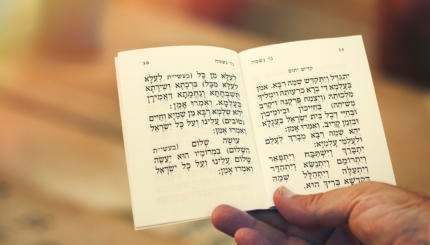Shiva, Judaism’s best-known mourning ritual, is a beautiful fiction: For the first seven days after the burial of close relative, a person does not leave the home or wash or have sex or get on with the business of living in general. Mourners are permitted to feel as if life has stopped, and that they can stop with it. People hear less about sheloshim, the 30 days after burial (including shiva).
The Facebook executive Sheryl Sandberg highlighted this 30-day mourning period in her searing, viral post, published in 2015 — 30 days into mourning her husband. “I have lived thirty years in these thirty days,” wrote Sandberg, whose husband, Dave Goldberg, had died suddenly at age 47. “I am thirty years sadder. I feel like I am thirty years wiser.”
Being a rabbi lets a person see death. Being with a person when she dies, and with a family as they mourn, removes death from the realm of theory and platitudes. What one learns from those experiences is that life and death have inertia. What Sir Isaac Newton observed, that bodies in motion tend to stay in motion and that bodies at rest tend to stay at rest, is true of life and death as well. When someone dies, those who love that person are yanked out of life’s forward motion.
Both shiva and sheloshim exist to slow down reality for a mourner. But it is sheloshim, during which mourners are to refrain from attending celebrations, listening to music and shaving (among other restrictions), that allows the mourner time to become the new person she will have to be in the face of loss. Sheloshim is the bridge between the speechlessness of mourning and the babble of normal life.

Help us keep Jewish knowledge accessible to millions of people around the world.
Your donation to My Jewish Learning fuels endless journeys of Jewish discovery. With your help, My Jewish Learning can continue to provide nonstop opportunities for learning, connection and growth.
But why is this period 30 days?
Jewish texts can be frustrating — garrulous on the how of Jewish life, but quiet as to its why. “Why?” has to be inferred. But a passage from Judaism foremost book of how, the Shulchan Aruch, the Code of Jewish Law, yields a lovely inference about the purpose of sheloshim.
“One who meets his friend, a mourner, within the thirty days [of mourning] he offers him words of consolation, but does not extend to him a greeting of peace (that is, says, ‘shalom’).
After thirty days, he may say ‘shalom’ to him, but does not offers him words of consolation in the usual manner, and only makes reference to his sorrow indirectly, [viz.,] he does not mention to him the name of the dead, but [only] says to him, ‘Be consoled.’” (Shulchan Aruch Yoreh Deah 285)
One doesn’t wish a mourner, “peace,” for they have little of it until 30 days after a loved one’s funeral. One consoles a mourner openly, fully, until 30 days after death, and then stops referring to their loss directly. What we can infer is that our teachers believed that something momentous changes at the 30-day mark. Sandberg wrote about the powerful lessons of that first month in her post on sheloshim.
Rabbi Chaim Shreiber has explained why this time frame matters: “The Jewish calendar is based on the moon. Just as the moon waxes and wanes in a cyclical period, the 30 days of mourning are an opportunity for the closing of a full emotional circle. The process begins with the funeral and the first days of shiva, when one can’t even see a glimmer of light. With the passing of time, the light returns in stages, and waxes more and more. Thirty days is an important period of time, a time for renewal and grasping a new reality.”
It isn’t that we stop mourning after the sheloshim has passed. The law tells us to wish a mourner our condolences for a full cycle of Jewish holidays. Rather, the end of sheloshim marks the beginning of living a new normal for the mourner. As Sandberg put it, “Those who have said, ‘You will find a new normal, but it will never be as good’ comfort me more because they know and speak the truth.”
Of course, there is the often-expressed who-are-you-to-tell-me critique, as in, “Who are you (the rabbis) to tell me that it takes 30 days to mourn this way? Everyone grieves differently, and there’s no one-size, fits all timeline for it.” The criticism is just. People are different, and grief idiosyncratic.
But if this rabbi’s experience says anything, it’s that people rarely give themselves even the full month before trying to reintegrate into “normal” life. It can make for a painful gait when someone tries to move too fast. Because to mourn is to be changed against one’s will. And these changes often dwarf a mourner’s desire to manage them.
Scott Perlo, a rabbi at Sixth & I Historic Synagogue in Washington, D.C., is shortly to take a position at the 92nd St. Y in New York.
Sign up for a Journey Through Grief & Mourning: Whether you have lost a loved one recently or just want to learn the basics of Jewish mourning rituals, this 8-part email series will guide you through everything you need to know and help you feel supported and comforted at a difficult time.
Looking for a way to say Mourner’s Kaddish in a minyan? My Jewish Learning’s daily online minyan gives mourners and others an opportunity to say Kaddish in community and learn from leading rabbis.



